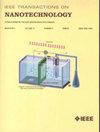高性能三元组网络的自适应分离约束三元组损失(A-SCTL)
IF 2.1
4区 工程技术
Q3 ENGINEERING, ELECTRICAL & ELECTRONIC
引用次数: 0
摘要
三重网络由三个子通道组成,广泛应用于机器学习应用。神经网络的有效性高度依赖于训练过程中使用的损失函数。本文提出了一种新的TNs损失函数,称为自适应分离约束三重态损失(a - sctl)。A-SCTL的独特之处在于分离了类内约束和类间约束,严格遵循相似性测量网络的目标。它的自适应策略利用了阶级间和阶级内术语之间的动态,以实现平衡的收敛;无需手动调整超参数,它增强了灵活性,并促进了跨各种应用程序的适应。此外,A-SCTL减少了可能的错误解决方案,并通过两个约束项的依赖性提供了对网络行为的洞察。在深度度量学习分类和人脸识别任务中评估了损失函数的性能指标。仿真说明了两个损失项和自适应超参数在训练时期的演变;结果表明,利用A-SCTL的tn在精度上优于其他现有的损失函数。此外,本文还详细介绍了A-SCTL的硬件实现,并评估了其相关开销。结果表明,与其他损失相比,在考虑整个TN系统时,A-SCTL所需的额外硬件开销可以忽略不计(每次操作0.008%的能量)。本文章由计算机程序翻译,如有差异,请以英文原文为准。
Adaptive Separately Constrained Triplet Loss (A-SCTL) for High-Performance Triplet Networks
Triplet Networks (TNs) consist of three subchannels and are widely utilized in machine learning applications. The efficacy of TNs is highly dependent on the loss function employed during training. This paper proposes a novel loss function for TNs, referred to as the Adaptive Separately Constrained Triplet Loss (A-SCTL). The unique feature of A-SCTL is the separation of intra-class and inter-class constraints, strictly adhering to the objective of similarity-measuring networks. Its adaptive strategy leverages the dynamics between inter-class and intra-class terms to achieve a balanced convergence; without manually adjusting hyperparameters, it enhances flexibility and facilitates adaptation across various applications. Moreover, A-SCTL mitigates possible false solutions and offers insights into network behavior through the dependency of the two constraint terms. Performance metrics of the loss functions are evaluated in deep metric learning classification and face recognition tasks. Simulations illustrate the evolution of the two loss terms and the adaptive hyperparameter across training epochs; the results demonstrate that TNs utilizing A-SCTL outperform other existing loss functions in accuracy. Additionally, this paper details the hardware implementation of A-SCTL and evaluates its associated overhead. Results show that compared to other losses, the additional hardware overhead required for A-SCTL is negligible (0.008% energy per operation) when considering the entire TN system.
求助全文
通过发布文献求助,成功后即可免费获取论文全文。
去求助
来源期刊

IEEE Transactions on Nanotechnology
工程技术-材料科学:综合
CiteScore
4.80
自引率
8.30%
发文量
74
审稿时长
8.3 months
期刊介绍:
The IEEE Transactions on Nanotechnology is devoted to the publication of manuscripts of archival value in the general area of nanotechnology, which is rapidly emerging as one of the fastest growing and most promising new technological developments for the next generation and beyond.
 求助内容:
求助内容: 应助结果提醒方式:
应助结果提醒方式:


